 Adventuriety
Adventuriety
We stepped onto our fifth continent (counting North America) since beginning our journey in July late the night before, after two long days of travel; drive to Los Angeles the night before for an early morning flight, Los Angeles to Atlanta, a three hour layover and then a six hour flight to Lima, Peru. We spent the night at a hotel across the street from the airport, sleeping soundly and quickly only to wake early, eat breakfast and head back to the airport. A note of travel advice here and one that I had actually read about in a guide book and then experienced firsthand. When traveling in South America, always check in to your flight the day before because things can change. Case in point, I had booked a noon flight to Cusco so we could sleep in, but magically we were on the 10:15 flight instead.
And here began my adventure. I medicate to fly, hell I medicate to buy plane tickets just to give you an idea of my “phobia,” but I really can’t handle two days of drinking enough wine to not worry about dying on a plane, so I had a dilemma. Our flight to Cusco was early-ish and then the plan was a busy afternoon of touring that including some hiking. All doable after a singular medicated flight, but this was day two and Cusco sits high in the Peruvian Andes at an impressive 11,152 feet, so there was also the elevation issue. I would need to be in full energy/good attitude mode. To drink or not to drink? I had decided that I would attempt a clean flight, but reserve the right to cave at the last minute. I guess Scott had the same idea because he started in on me at breakfast, “You’re not going to have any wine right? I need you ready to go. I’ll take care of you on the plane. I’ll hold your hand (he wasn’t even sitting with us), I’ll be right there with you.” Sweet you’re thinking, right? He’s never nice to me when we’re flying, not that he’s mean, he just gently ignores me, pretends I’m not actually a nutcase or falls asleep. We’ve both gone through some different coping methods over the years and it was much worse when the kids were little and I never medicated to fly. For some years he’d try and talk me through it and then the kids were a distraction for me (I was like Disneyland for them when we flew) and then the kids got old enough to entertain themselves and Scott ignored me. Oh, I’ve been to counseling, many different counselors. One counselor admitted to me mid-session that she also had a fear of flying and another counselor was convinced that I must get special attention from my family when I “acted” like I was afraid to fly. I had to laugh at that. The best advice came from a family practice doctor who asked me if I had tried anything that was helpful. I admitted that a glass or two of wine brought more relief than any prescription medication and she thought that was fine and better than something synthetic. Anyway, we checked in and I still hadn’t caved and Scott got his seat switched to sit next to us. He started counseling me as only he can. “We’re all together. We can die together, isn’t that sweet?” This is his idea of being extra supportive. Thankfully the flight attendant kicked him out of the seat next to me and into the seat he was supposed to be sitting in, directly in front of us, close, but not close enough to hold my hand and play the reassuring and compassionate husband.
The kids were tired and although the flight was scheduled to leave at 10:15, we were about an hour late taking off and without even realizing it, my education in Peruvian culture was beginning. Both the ancient Inca Civilization and Andeans today embrace the concept of duality and there are countless examples including day and night, sky and earth, above and below, wild and tame, wealth and poverty, etc. Proof of this concept is seen in art, architecture and mythology and as the kids snuggled up against me and dozed on the plane, I experienced this phenomena. It was the best feeling in the world to have my growing babies cuddled up against me, but it was in a place that I struggle with and this flight was no exception. The final decent into the Cusco airport was like we were in a toy plane being haphazardly carried down a steep spiral staircase by an energetic toddler. Sharp turns and little “whoop di doo’s” had people gasping and nervously laughing, followed by a sudden leveling out of the wings for a quick touch down and sudden full stop. The conclusion of our landing was met with a round of enthusiastic applause. I wasn’t sure if the landing was normal because of all of the mountains or something else, maybe it is customary to clap when one lands high in the Andes? This crazy, sober flight that I spent one moment fighting for control of my anxiety and then the next moment soaking in my sleeping children, with the thought that it may be the last time they would both sleep on me, was certainly a duality, one of the ironies of life and also proof that heaven can be found in scary places.
And what is that little green card? Well, we are endeavoring to win a contest sponsored by SmartWool, a clothing company. “FlatLittleGuy” will adventure with the family for a month, be included in some photos and just maybe win some new SmartWool clothing for us! I like FlatLittleGuy because it makes some people I know a little more interested in pictures.
Here we are in the Plaza de Armas (the main square in Cusco) with some beautiful Andean women who will happily pose for pictures and let you cuddle a baby lamb in exchange for a few a soles. This was our first few moments in Cusco and it was surreal. Remember all of those counselors I visited in a attempt to be a happy flier? One of them encouraged me to think of planes as “transporters from Star Trek.” Walk onto the plane in familiar surroundings and off of the plane in an entirely new world. I felt that sensation standing in the square, breathing the crisp, thin air. The sun was shining brightly and yet the light was not intense enough to wash out colors or hurt your eyes.
On the top of the fountain behind us stands Pachacuti, the ninth Inca Emperor (1438-71). He was the second son of the Inca (Inca literally means king) Viracocha and not designated to become king. When Pachacuti was only sixteen, the warlike Chanca, an enemy of the Inca, attacked the Kindom of Cusco and his father and older brother fled. Pachacuti stayed behind and defeated the Chanca. Pachacuti is credited with transforming the small Inca kingdom into the famous empire, Tawantinsuyu (the way the Inca referred to their empire meaning a group of four things meeting in the middle) The capital of the empire and meeting point of those four corners was Cusco.
After posing with the Andean women, we enjoyed a beautiful lunch of some traditional dishes presented with a modern twist. We had a view of the plaza and observed the local police chasing the Andean women away, the woman carrying the lamb ran with obvious care.
Alpaca! I thought it tasted like Carnitas, or fried pork. we also tried Guinea pig and a traditional roast chicken and potato dish. The Andean people raise over 3,000 varieties of potatoes.
We drank Coca tea, also called mate de coca, it is made using the leaves of the coca plant, which is native to South America. It is the ancient remedy for the effects of high altitude. Ten or so leaves, direct from the plant, steeped in hot water for an earthy tasting tea, is popular and offered everywhere you go from check-in at your hotel to cafes, restaurants and it is even offered in shops. You can also chew on the leaves or purchase candy containing coca but however you experience the coca plant in Peru, bringing it mostly anywhere else in the world will get you in trouble.
Luis, our guide for the historical and archaeological part of our adventure met us after lunch and began our history lesson with the Cusco Cathedral also known as The Cathedral Basilica of the Assumption of the Virgin. I’m going to warn you dear readers right here and now that I am no historian (although maybe I will become one someday) and like everywhere one wanders there are infinite things to learn about and understand and not enough time in this life with which to accomplish total comprehension so I will do my best. Our wonderful guide Luis was obviously a passionate and dedicated student of many aspects of his country and its people, both past and present, and immediately began sharing his knowledge with us. The amount of information was overwhelming and our education began with the statue of the ninth Inca Ruler immortalized over the fountain and the cathedral which took over 100 years of forced Inca labor to build after the Spanish invaded.
The Incas built the temple known as Kiswarkancha on the main square in Cusco about a century before the Spanish arrived. It was also the palace of Viracocha, the ruler of the Kingdom of Cusco and the same dude that fled the Chanca. When the Spanish arrived in Cuzco, they decided to take down the temple and build their cathedral for the purpose of removing the Inca (Andean) religion from Cusco and replacing it with Spanish Catholicism. Construction began in 1559 and although the Andean people were forced to build the church, they cleverly incorporated much of their own religious symbolism into the cathedral. This can be seen in the art inside the building as well as in the building itself.
Our next stop was Sacsayhuaman, possibly meaning “a satiated hawk” or “house of the sun” in the ancient language of Quechua, and an archaeological ruin found on the northern outskirts of Cusco. There are many and evolving opinions and ideas about this ruin and much mystery. The site is built on the side of a steep hill. At the top of the hill are ancient ruins predating the Incan society by years (lots of opinions on how many) Some sections were first built by the Killke culture about 1100. The complex was expanded and added to by the Inca probably beginning in the 13th century. The above massive stone was once the head of a puma, a symbol of human strength and representing the world of humans or the present.
This area is the older section of Sacsayhuaman and was used to study astronomy and for religious purposes like ceremonies and mummification.
Another area used to study movement of the heavens.
This is an alter in the area used to prepare mummies of both humans and animals.
The whole site of Sacsayhuaman is beautiful even without knowing anything about it.
The city of Cusco stretches out in the valley below.
This wall forms a large oval. It might have held water long ago as water was an important part of Inca religion.
Andean women and their alpaca leaving the ruins after a day of posing for pictures.
We asked Luis, our guide to invite these women over for a photo. The kids loved holding the lambs for the second time in one day.
Cristo Blanco , a towering, white statue of Jesus looks over Cusco near the ruins. Similar to Sacsayhuaman there are a few versions of the significance of this monolith. One version is that it was a gift from Arabic Palestinians who sought refuge in Cusco after World War II. Another is that Pukamoqo Hill was a spiritual location for the Incas and when different people visited the area they would bring a handful of soil from their homes and place it on the hill. Local myth says that the hill holds soil samples from all the four quarters of the Inca Empire, Tawantinsuyo. Yet another version is that the statue was used to impose Catholic beliefs (the statue) over Andean traditions (placing soil on the hilltop).
Behind us to the right is the most well known part of the ruins, the three zigzagging stone walls and to the left is Christo Blanco.
What exact purpose did this impressive complex hold? Was it a royal retreat or possibly a fortress, or was a place of religious significance? Does the shape of the walls represent lightening and a connection from the heavens through the earth to the underworld, the prevalent belief of three existing worlds? As important to the Andean people as the concept of Duality, is the belief in Reciprocity, and in this spirit it is believed that Pachacuti, the ninth Inca (king), invited many tribes here for a big festival and then asked them to build Manchu Picchu.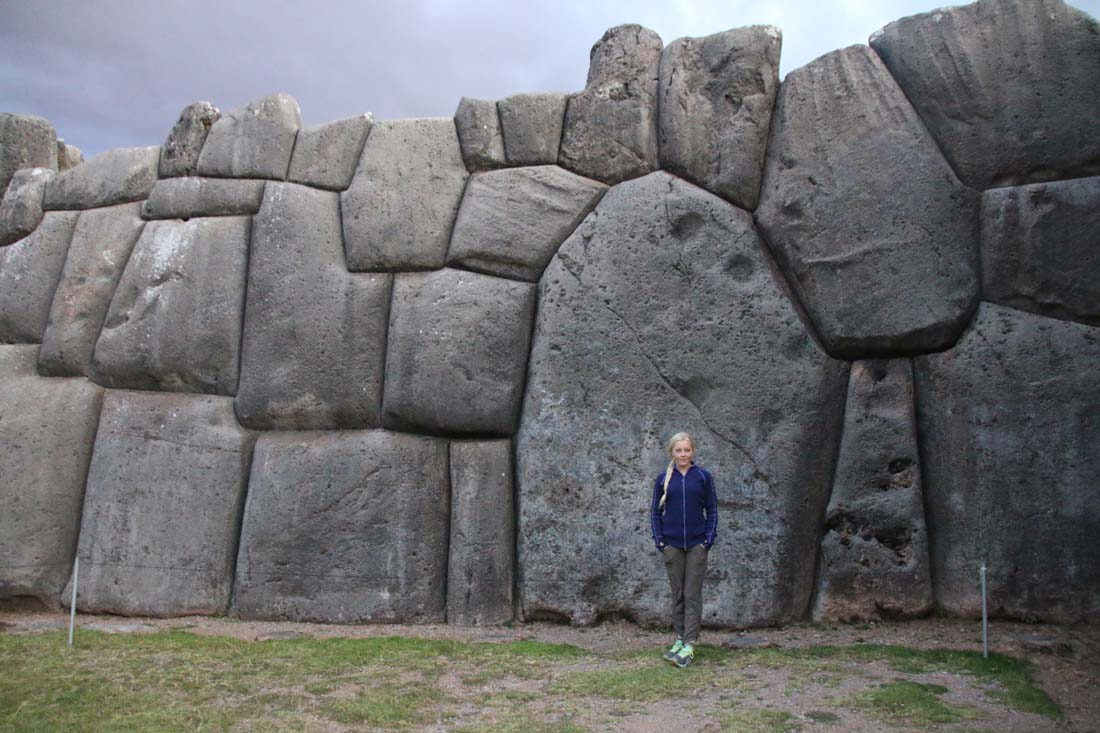
The stones are massive and fit together perfectly without mortar.
One thing is for certain, much of Sacsayhuaman was disassembled by the Spanish and used to build their Cathedral over the ancient Incan religious site in the main plaza of Cusco.
Our final stop of the day was the family owned and operated Factoria “La Vicuñita” a wool factory where we learned to feel the difference between real and fake baby alpaca wool (I probably still can’t). Scott and the kids are feeling a vicuña pelt. A vicuña is an endangered relative of the llama and the hide can only be taken once the animal has died from natural causes. Any item made from this animal is incredibly expensive, think Birkin bag expensive, and carries massive fines without proper documentation.
After the short demonstration, we admired all of the beautiful items created at the factory and shopped for sweaters.
Only alpaca though, no vicuña!
And so ended out first day in Cusco, our first day in Peru and our first day in South America. It was certainly a full day and a wonderful beginning to another adventure. There is an energy here that is palpable; it is a connection of past and present, a connection of the land to its people, it is the concept of duality that I unknowingly experienced on my way to this magical place.


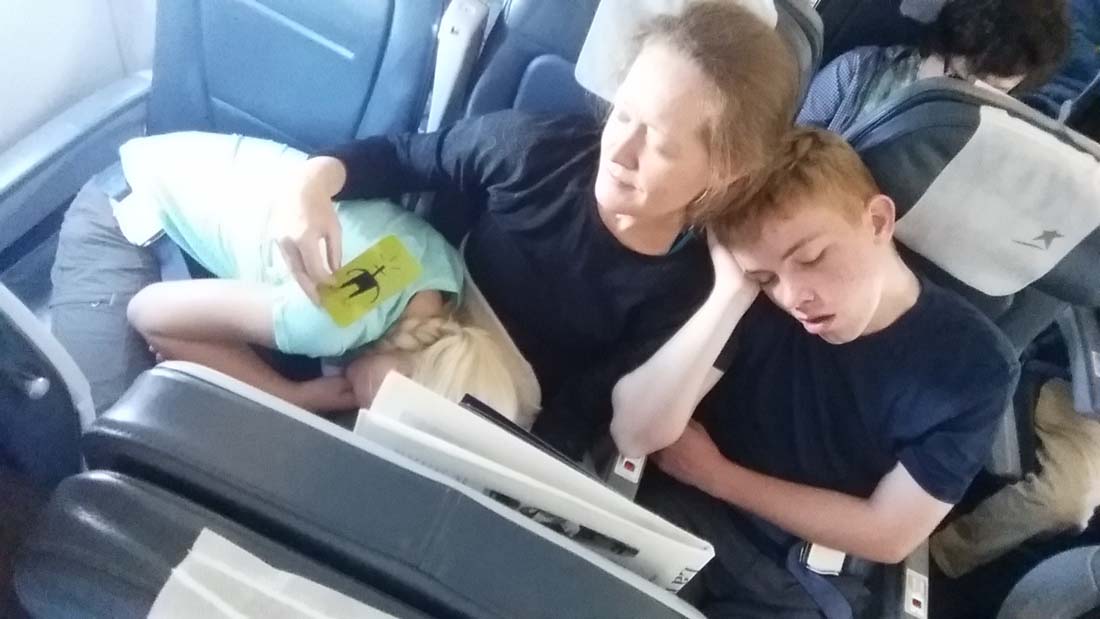
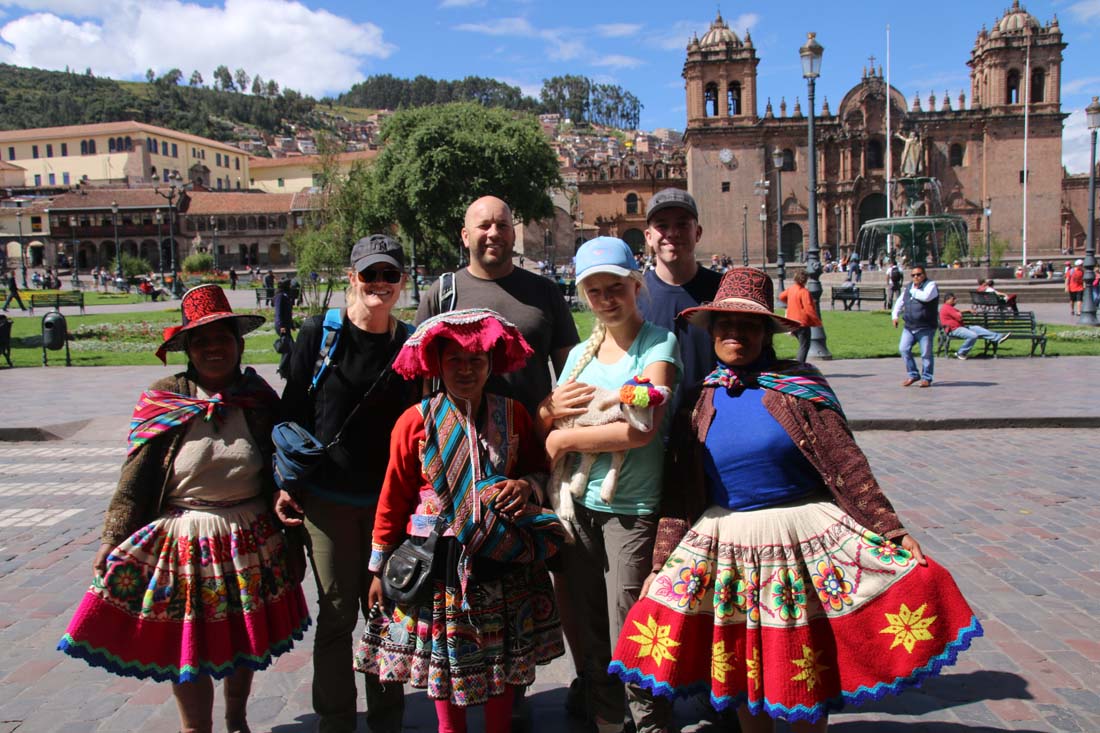
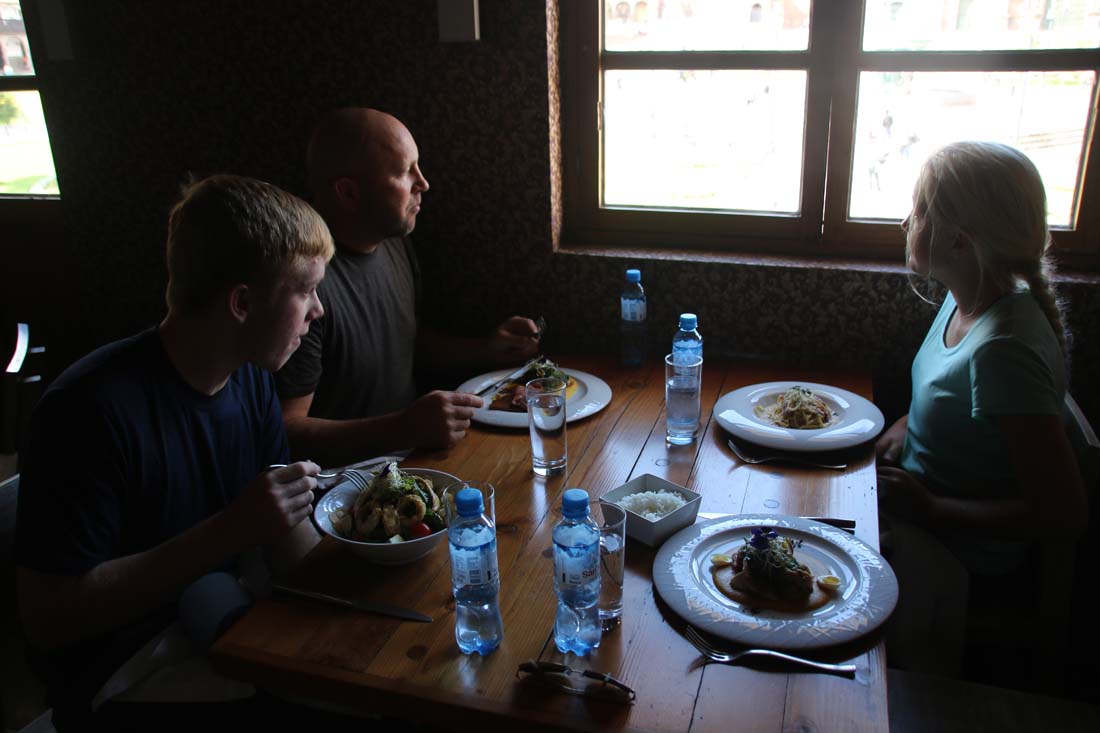
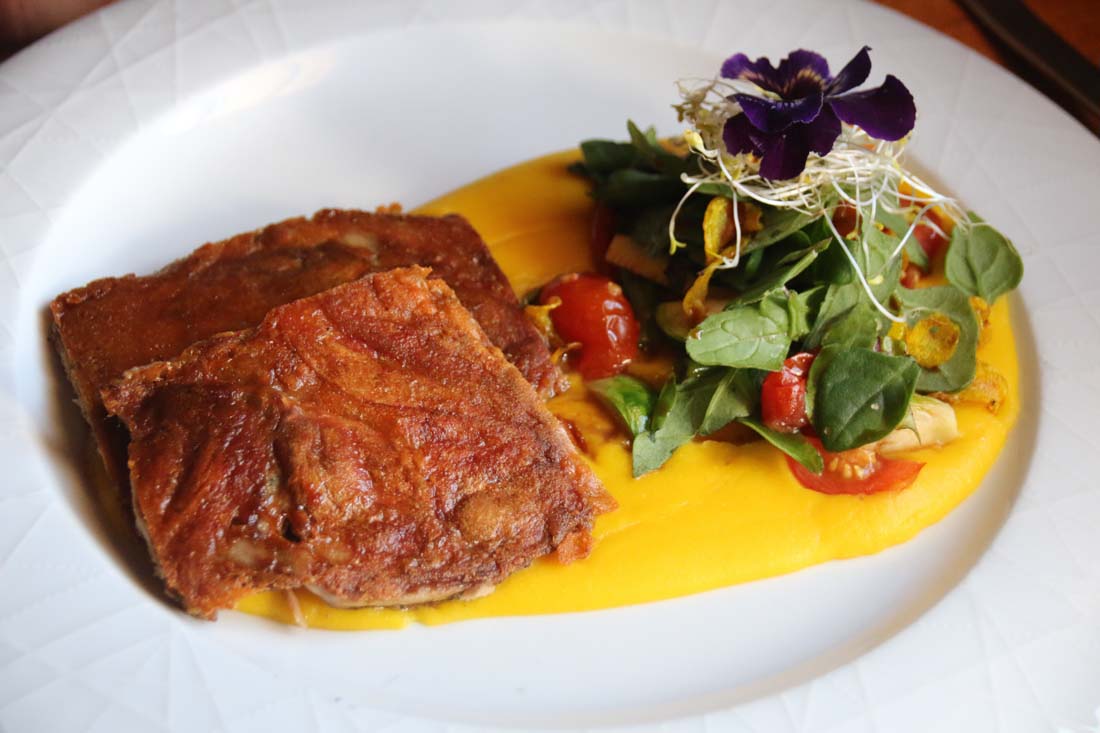

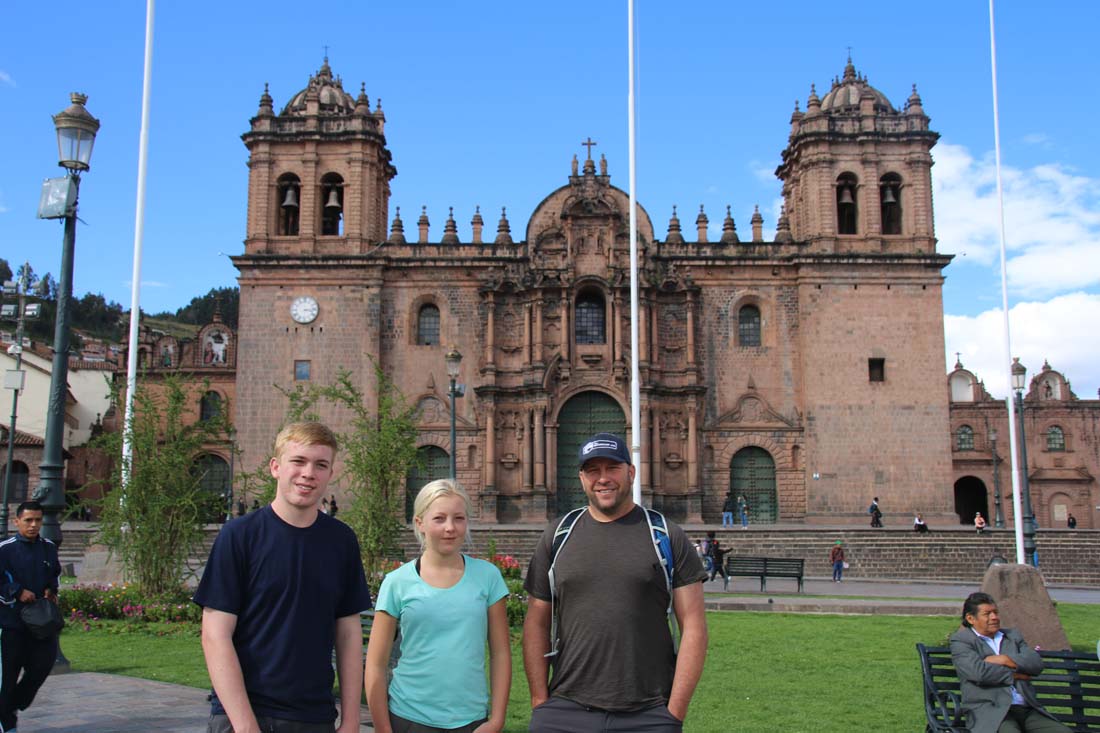

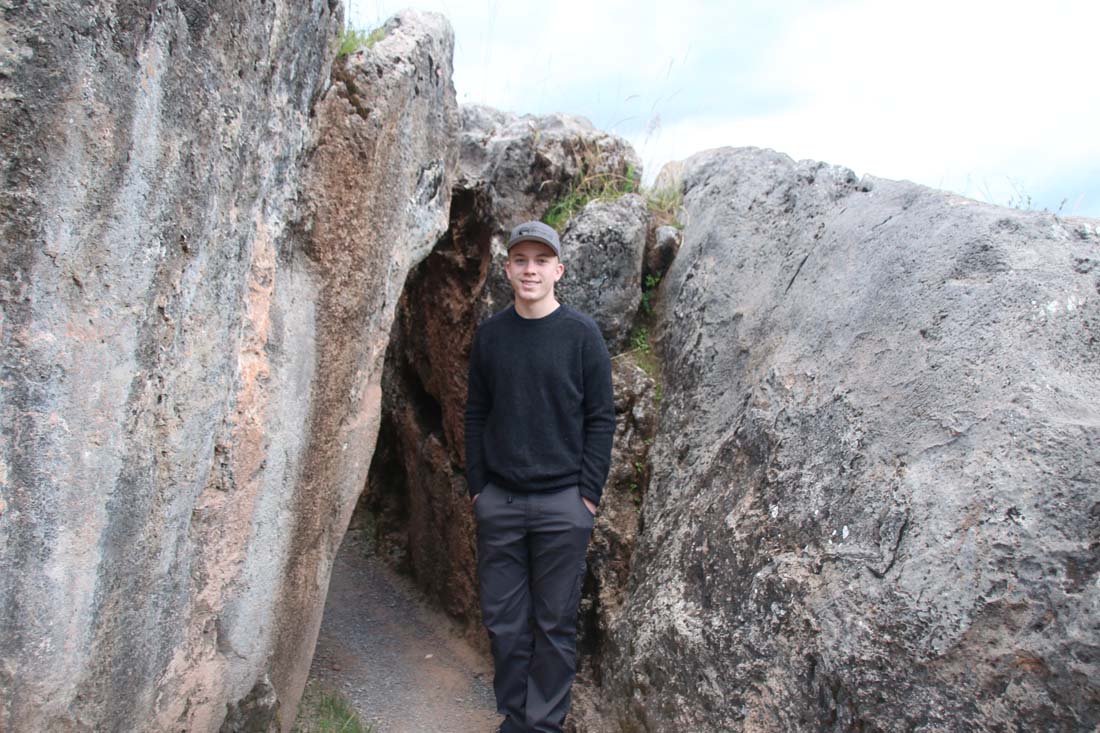





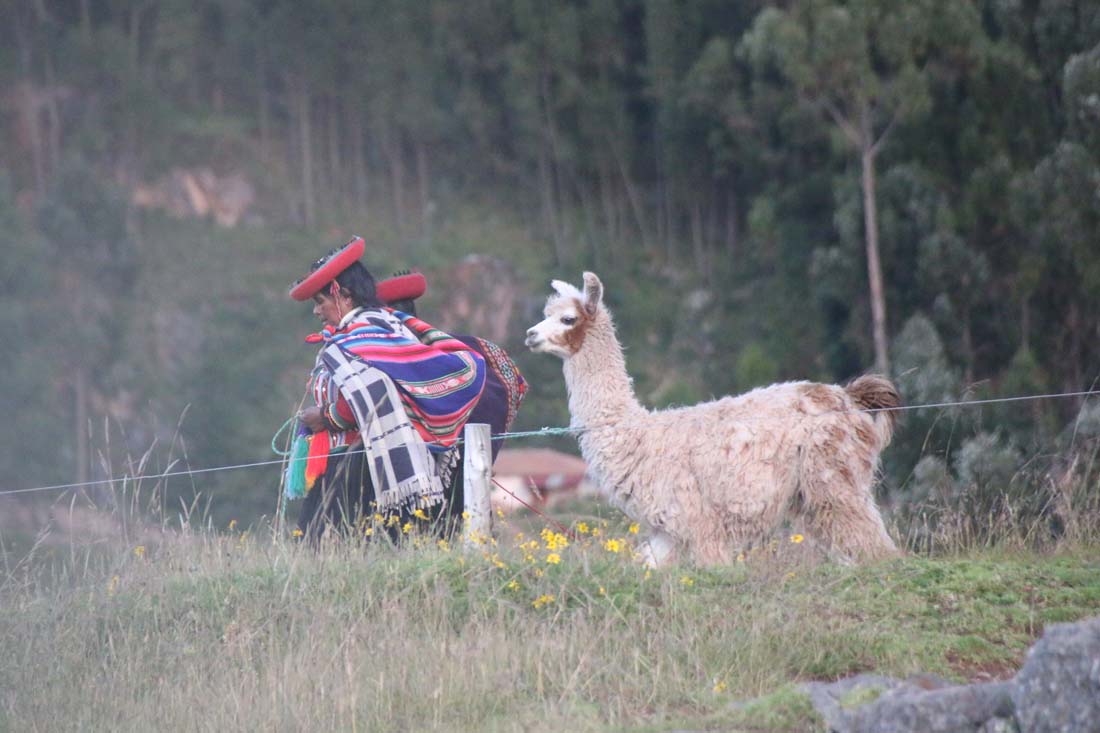




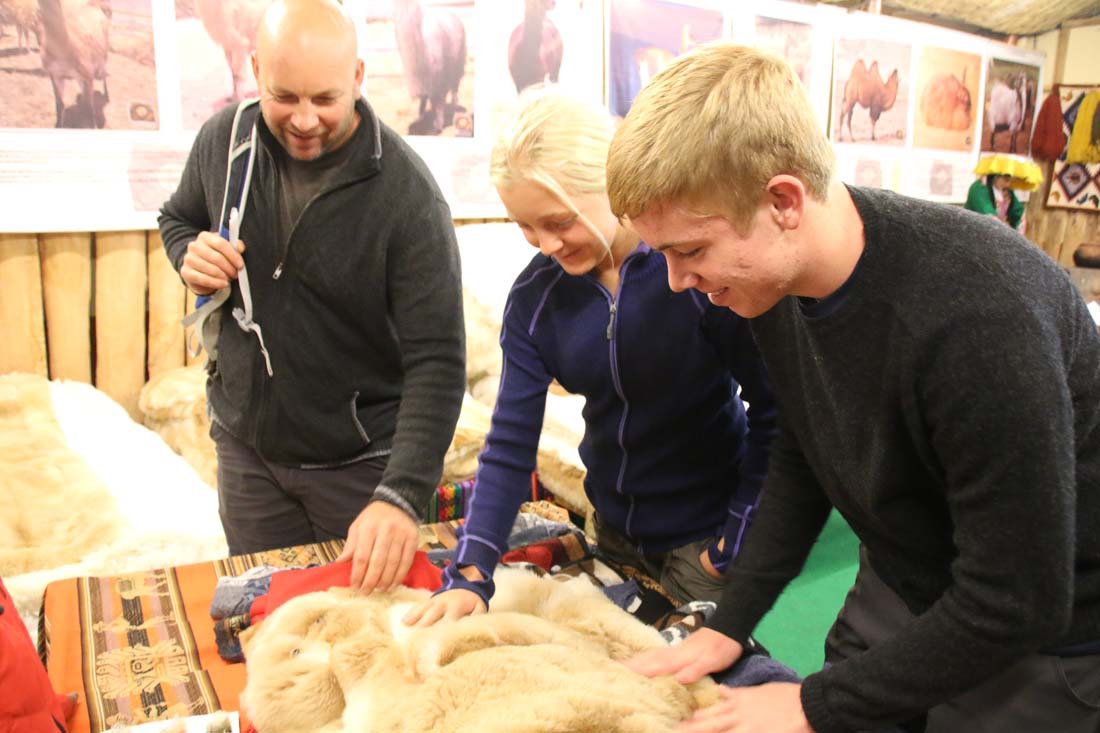


Loved every second of your blog!!!
Thank you Donna! There is much more coming as we have been going nonstop! Lots of love to you!
Love reading this Daisy. I would eat all 3000 varieties of potatoes! And how do you keep yourself from buying all of these really interesting cool stuff to bring home??
Hi Mavis! Thank you for reading my blog! Surprisingly out of all those varieties, only 300 are edible, but that would still keep you busy eating potatoes for a while. I think there are about the same amount of varieties of corn as well. Lots of carbs to survive all that elevation. As for buying stuff, I usually don’t have enough room in my suitcase which is a great deterrent! I do still manage a few things:).